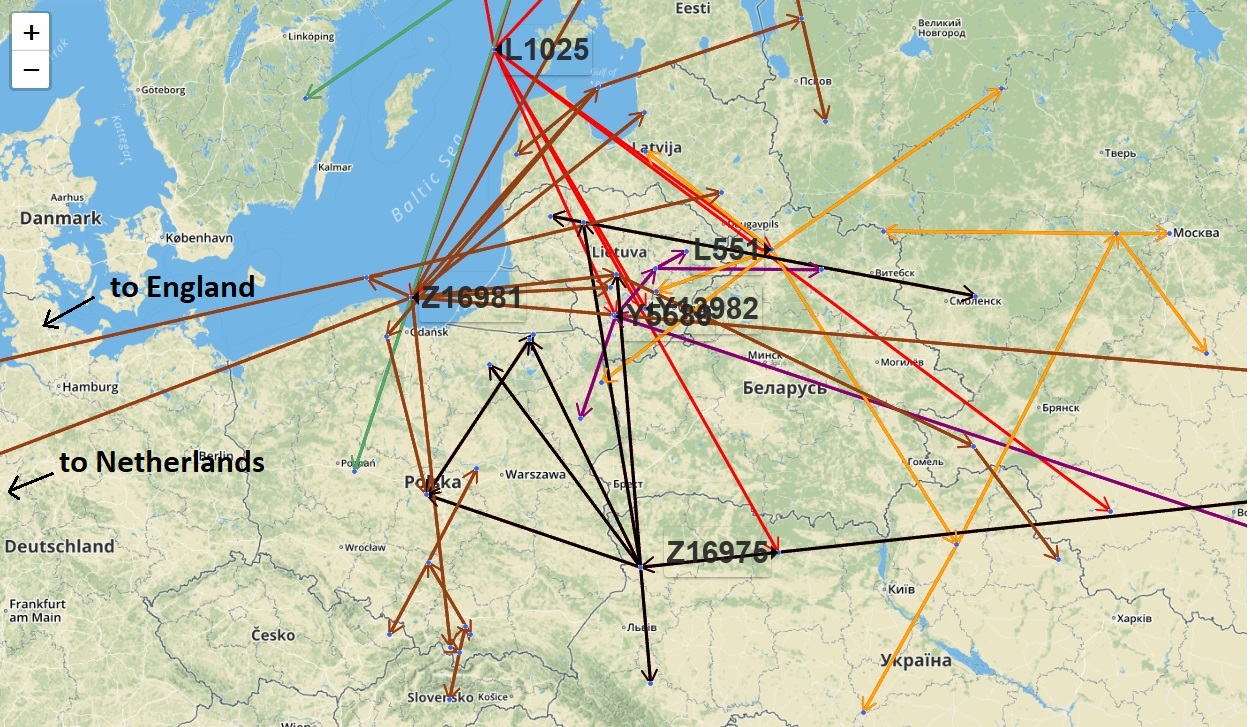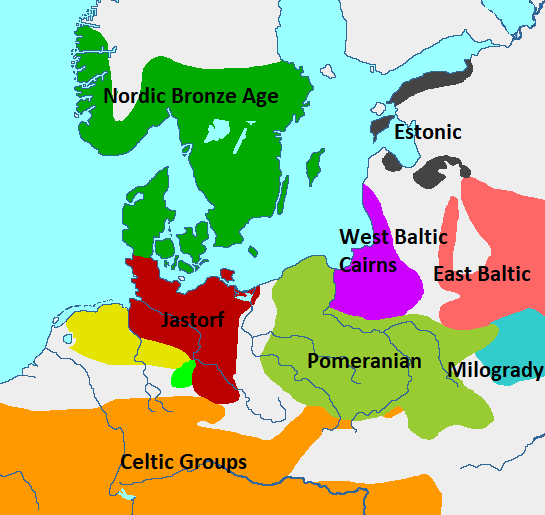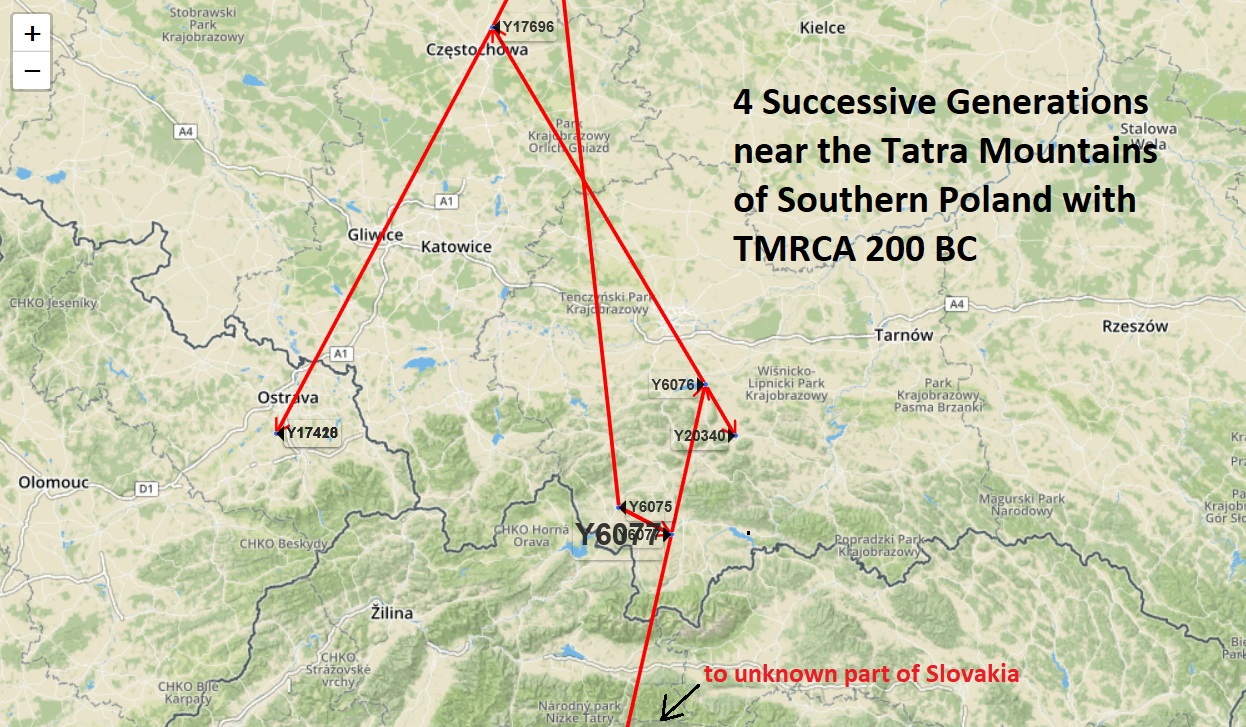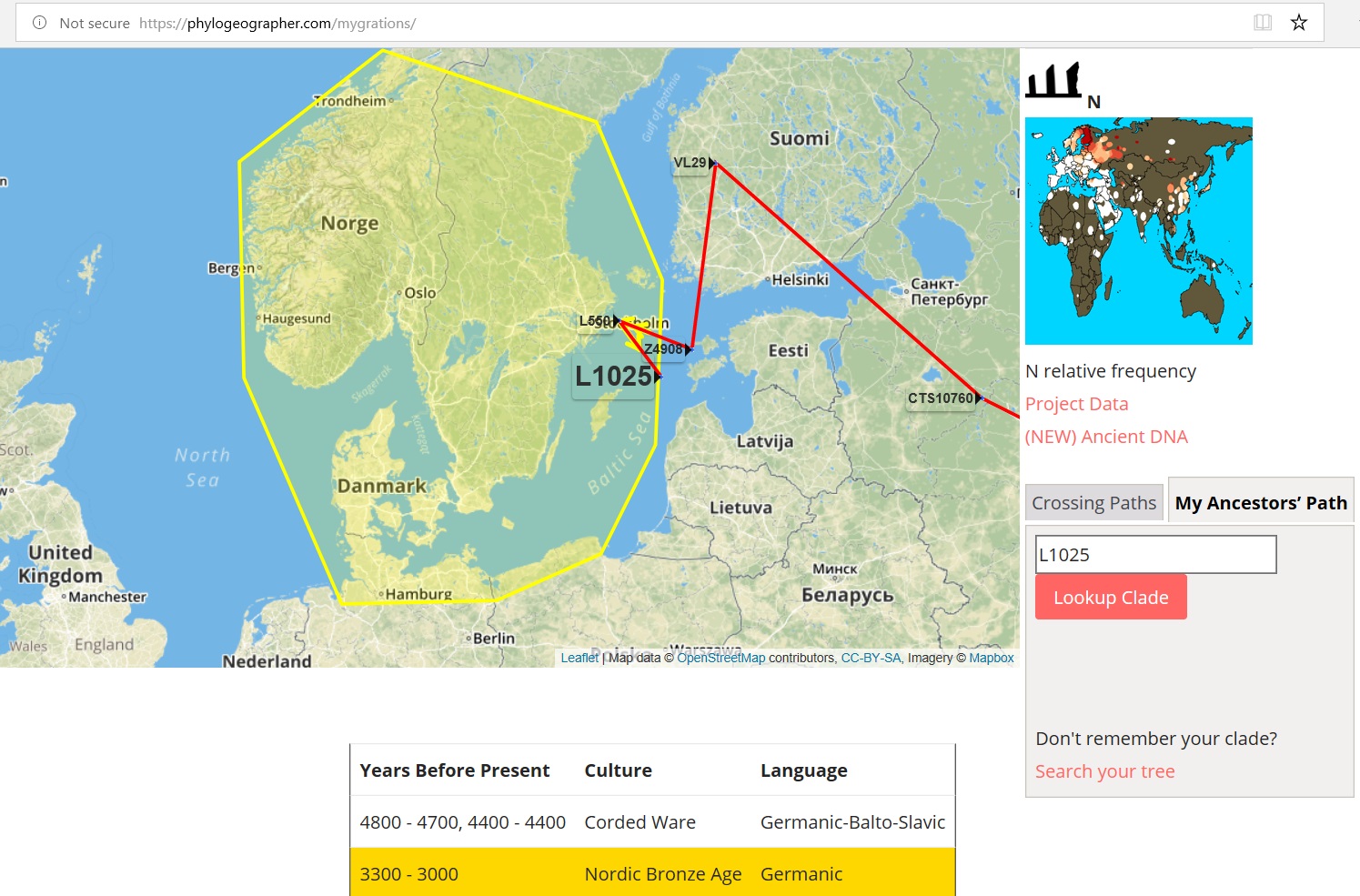Migration paths computed by PhyloGeographer are theoretical, based on a set of inputs from YFull and ancient samples which are not uniformly sampled across the world.
The algorithm is a good faith attempt to derive an objective path, according to a Methodology, and may not always compute a path that makes sense, depending on the complexity of the distribution.
Each month the paths are updated based on latest YFull samples. I hope you find this free resource useful for your own research.
N-L1025, whose ancestors came from Finland (possibly via Stockholm) experienced a major diversification event in 600 BC by founding six lineages. They stretch from the northern coasts of Sweden and Finland to Poland.

The greatest diversity appears in Latvia and Lithuania, which may be a clue to where this man was born or lived most of his life.

Subsequent migrations to the south and east might be explained by lineages having been assimilated into Slavic groups. However, one interesting migration from the Baltic to the Poland/Slovakian border dates back to 200 BC.

Around the same time or a few centures earlier, a likely Celtic lineage in haplogroup J-CTS11760 migrated to the same area from the south.
Perhaps Y6077's migration to this region is representative of the expansion of the Przeworsk Culture, an amalgam of local cultures with Jastorf and La Tene influences that probably also comprised the Vandals.
"According to the Gallaecian Christian priest, historian and theologian Paulus Orosius, the Vandals, who lived originally in Scoringa, near Stockholm, Sweden, were of the same stock as the Suiones ("Swedes") and the Goths." - Wikipedia "Vandals"
I mention this purely as interesting anecdotal evidence which cannot be taken as proof. The ancestors of Y6077 do appear to have lived in Stockholm in 900 BC (below migration of L1025), but this is about a millennium before the Vandals become known to history.
Given the deep diversity in Latvia and Lithuania between 600 BC and 200 BC it seems likely that the previously Finnic ancestors of Y6077 may have assumed a Baltic cultural identity during this time. This lineage may have joined a coalition of diverse tribes in neighboring Poland that ultimately became known as Przeworsk.
Early historians from Greece or Rome would have likely lacked the knowledge to distinguish these tribes from one another on a cultural basis, so unless it can be proven unlikely on the basis of material finds, it makes sense that some Baltic or Finnic tribes could have been lumped together as "Germans" by these ancient chroniclers.

The L1025 man who lived at the end of the bottleneck in 600 BC was likely a powerful tribal leader who either was born or spent most of his life in Latvia/Lithuania. He was engaged in enterprises, expeditions or had his sons marry into families from Poland to Finland and northern Sweden. His ancestors likely had been living in Finland since at least 1600 BC and may have become integrated into and/or conquered peoples living in Stockholm around 900 BC.

I do understand, that current representation of origins of clades is based on weights, but at the same time if we were doing the same observation to real tree branches, then we would come to conclusion, that branches did not grew from trunk of the tree 😉
West Baltic Cairns(Prussian) hardly was ever having any drop of N1a(maybe – just maybe 1% of non L1025 of previous much much earlier Samoidic people).
Pomeranian culture also has nothing to do with Z16981.
The first reason is that Pomeranian culture vanished before even L1025 moved into Latvia and Lithuania(that includes Z16981 – this might be the place for that L1025 trunk position…. maybe at least as some kind of experiment, that takes into consideration ALL those N1a replacements by later Russian migrations). It is only speculation(no idea, if there ever has been any expedition to collect dna from them), but Z16981 might actually come from coastal migration from Kursenieki, which peaked around 19th century. https://en.wikipedia.org/wiki/Kursenieki
Another thing about Pomeranian culture – Gothic had a walk-through in Pomerania around 2000YBP and if they had N1a or Pomeranians had N1a, then N1a would have been also in Crimea from Goths, which is not a fact, but the fact is that vikings in Sweden with N1a were only a thing around 1000YBP. Anything that happened before seems to have happened not there 😉
I have a sense of feeling, that these maps uses vague interpretation of TNMRCA as something, that appeared there… as if descendants stay at the same area forever and if we apply this to Y6077, then we can come to conclusion, that N1a-Tat appeared in Europe 8000YBP, even though reality is that it appeared in China around 8000YBP. Might I suggest getting rid of that information in maps completely(unless there is also present information of that most recent ancestor grave), as it confuses you and it will confuse others and it definitely irritates me 😀
Very interesting post. I have been identified as belonging to L550-L1025-FGC52464-BY21881-BY21880-BY21883-FGC52472. What could we learn about these changes in terms of migrations? When do we share the common ancestor with Gediminids and Rurikids? Are there any deeper guesses as to who that L1025 powerful tribal leader was? Is there any archeological evidence? How much of a Viking culture did these people inherit from L550?
I am not up to date on the status of the research of this lineage. Please post anything you find here for the benefit of others.